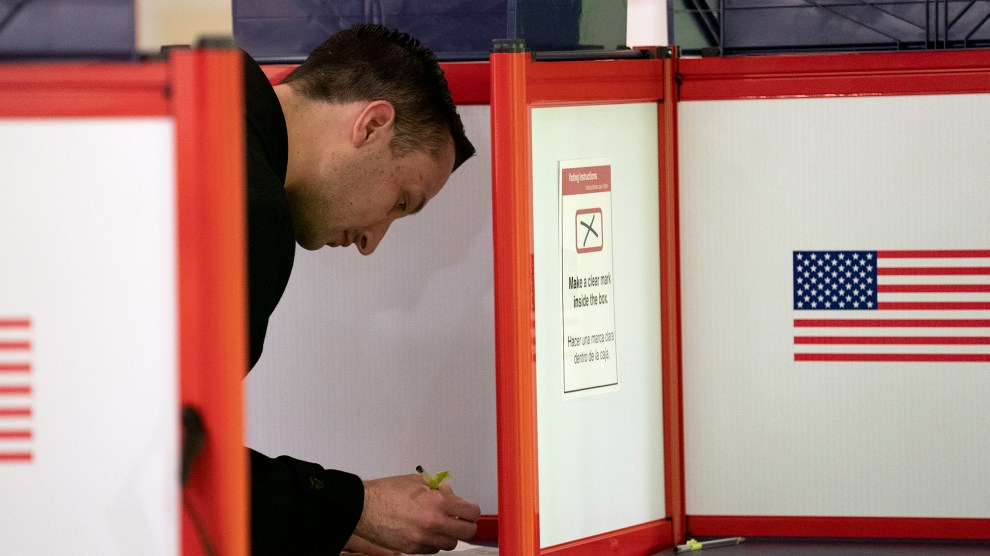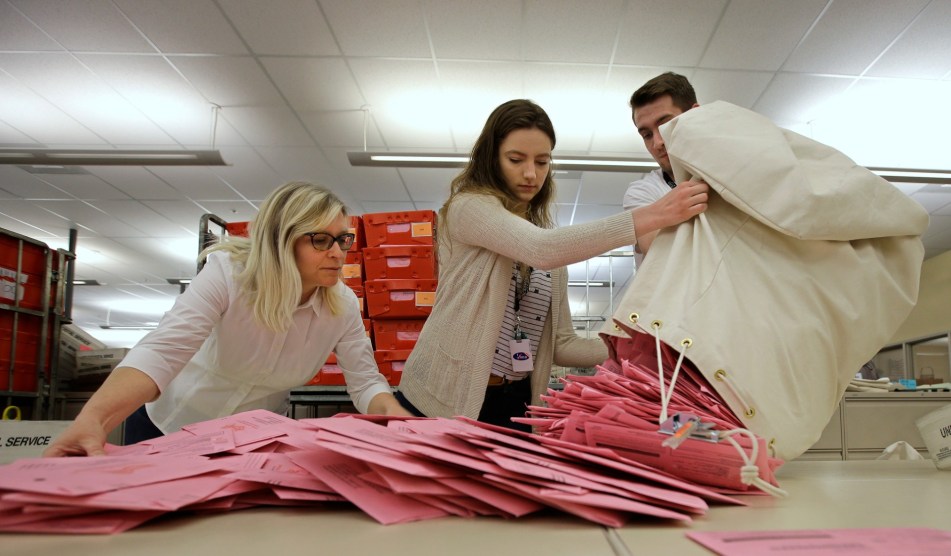This evening, hours before the polls closed in California, House Speaker Nancy Pelosi urged the state’s voters to “stay in line” amid reports of long lines and dysfunctional voting machines.
Stay in line, friends. Your vote is imperative. https://t.co/KDJjT3W1sP
— Nancy Pelosi (@TeamPelosi) March 4, 2020
A spokesperson for California’s secretary of state told the Associated Press that election workers in 15 counties reported problems connecting with the state’s voter registration database.
In Los Angeles, where more than 5 million people are registered to vote, voters have reported long lines outside polling places. Inside, poll workers have been trying to keep up with LA County’s first redesign of its voting technology in more than a half-century. In some places, the wait to vote was three hours.
Update: there are now 3 hour waits at the ONE voting center on campus at UCLA
Yes only one at UCLA with 40k students
And the other two a 15 min walk
w/
3 hour wait &
Now 4 hour wait timeStudents are genuinely walk away in line, I’m watching them#SuperTuesday #LosAngeles
— Sophia “VOTE” Armen (@SophiaArmen) March 4, 2020
Overheard outside a West Hills voting center where the line wraps around the corner and the wait is more than an hour. “Now here’s where we could use some Girl Scouts” #CaliforniaPrimary pic.twitter.com/I6oxNv9ORe
— Sonali Kohli 🙆🏾 (@Sonali_Kohli) March 4, 2020
Longest lines I’ve ever seen in Los Angeles. 3 hour wait times in West Los Angeles. Reports of even longer lines at voting centers at UCLA.
— Samuel Braslow (@SamBraslow) March 4, 2020
The New York Times detailed the snafus:
At the root of the delays seemed to be slow technology. For the first time, voter rolls were electronic so people could cast their ballots at any vote center. But that meant when the tablets poll workers used to check in voters were overwhelmed, it caused major backups in the lines.
There was also confusion about whether those who had filled out interactive online ballots ahead of time could join a separate, shorter line. There were also reports of voting machines malfunctioning.
For weeks, state and county officials have been warning of long lines on Election Day, in part because of the new system and also because voters could register in person on Tuesday.
There were reports of two hour waits at several polling places throughout Los Angeles County, with poll workers directing voters to other sites that had equally long waits. Several machines reportedly failed, leaving many voting booths sitting empty and leading to even longer waits. At one polling place, a poll worker handed out candy to weary voters, and campaigns sent pizza to several voting sites at the University of California campuses













